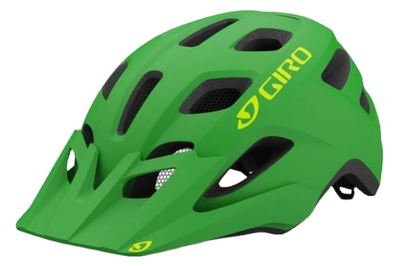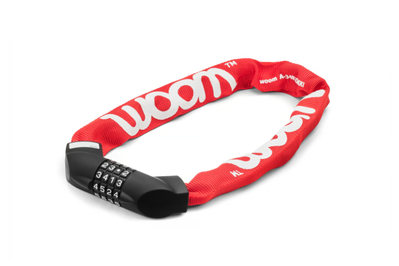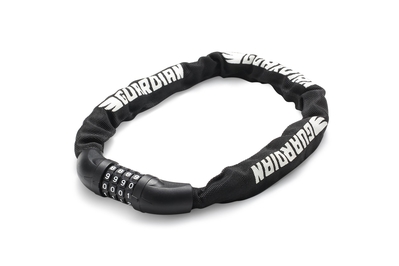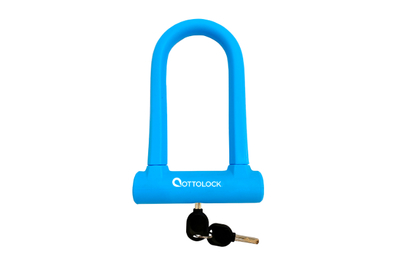
By Laura Motley
Bike riding can be an empowering—and super-fun—way for kids to get to school. The first time my 6-year-old daughter conquered the hill between our house and her school, I don’t think she stopped smiling all day.
It’s also good for their bodies: Kids should spend a minimum of 60 minutes per day engaged in moderate to vigorous physical activity, according to the Centers for Disease Control and Prevention, and walking or biking to school can even increase concentration in class.
An added bonus for parents: You get to skip the gridlocked car drop-off line. Here’s how to help your kid ride to school smoothly and safely.
Find safety—and fun—in numbers
Riding in a group may make the experience of biking to school safer and more fun. Recent years have seen a boom (PDF) in bike buses, in which groups of kids and parents plan a bike route with multiple stops and slowly and safely make their way to school (or sometimes multiple schools). Research has shown that motorists are more aware of and responsive to larger groups of cyclists. Plus, kids might just be more excited to ride with a big group of friends.
I saw that enthusiasm grow in my own city when my friend Meghan Farrell started a once-a-week group ride to help her 8-year-old son get to school in our Portland, Maine, neighborhood. Her bike bus helped families from the same school get to know each other. “I’ve had parents tell me that their kid asks if it’s bike bus day every day of the school week,” she told me. ”They love it that much.” If your neighborhood doesn’t already have an established bike-bus route, you might look into starting one.
Because younger kids tend to be more impulsive and less aware of traffic, the American Academy of Pediatrics recommends that children be accompanied by a parent on their walk or ride to school until around age 10. But norms vary, and different schools have different rules for when kids can come and go on their own. Parents should use their best judgment to determine when their kid is ready to ride alone, or in a kid-led group.
The general consensus is that kids should ride on the sidewalk until they’re about 10 years old, but some states and cities have different laws. For example, New York City bike law states that children 12 and under should ride on the sidewalk, while adults must ride on the street. Get to know your own town’s sidewalk law, and if it doesn’t have one, use your best judgment when making a plan for your kid.
Consider that the route you take to get to your kid’s school by car may not be the best route for a bike ride. Prioritize streets with less traffic, wide sidewalks, bike lanes, and crossing guards. It’s a good idea to try out the route once or twice before school starts, even if you’ll be accompanying your kid on their daily ride. Point out stop signs, potholes, crosswalks, or other markers they should be aware of. If they’ll be riding alone, make sure they know the route in and out before they attempt it by themselves.
Rule the road
The right knowledge and gear can make the process of biking to school safer and more comfortable, and it increases the chances that it’s sustainable over the long term as well.
Start with a bike that fits. A properly sized bike helps your kid feel confident and safe while they’re riding. REI, the company that makes our runner-up for a first pedal bike, has a handy sizing chart online that can help you find the right bike for your kid, regardless of what brand of bike you buy.
Know your ABCs (air, brakes, chain). Learn how to do an ABC quick check (PDF), which uses a kid-friendly acronym to help you and your kid make sure their bike is in proper working order before they ride. Check the air in their tires, make sure the brakes are working properly, and check the chain, cranks, and cogs for cleanliness and tightness.

Wear a helmet. We recommend the Giro Tremor as the best helmet for most school-age kids. But what’s most important is that any helmet you choose fits properly (PDF). Wearing a helmet should be nonnegotiable—some states even have mandatory bicycle helmet laws for children.
Top pick
This breathable, high-quality helmet is offered in a single universal size that fits a wide range of head circumferences. But it comes in only four solid colors.
Dress for comfort and visibility. Kids (and their accompanying adults) should ideally wear bright colors and use bike lights and reflectors, which help make cyclists more visible to motorists. Make sure their right-pant leg is tucked into a sock or rolled up, so it won’t snag on the chain (or be stained by chain grease). You can help a kid maneuver a loaded backpack by packing heavier items like books as close to the back panel of the backpack as possible. Then tighten the shoulder straps for a snug fit, and if there’s a chest strap, use that, too. (Safe Routes Partnership mentions that some bike buses employ a parent with a bike trailer (PDF), for carrying heavy backpacks, musical instruments, or the like.)
Use hand signals and a bell. Brush up on bike hand signals (PDF), and teach them to your kid. These are universal rules of the road that help cyclists communicate with other cyclists, as well as motorists. In lieu of blinkers or brake lights, cyclists use their arms to signal that they’re turning, slowing, or stopping. It’s also a good idea to teach your kids to ring their bell and say “passing on your left” when passing a pedestrian or another biker, and to call out hazards for the riders behind them. Pedestrians have the right of way on sidewalks; instilling some common courtesy in your young rider will serve them well.
Look both ways. Make sure your kid knows that they need to stop at every intersection, marked or unmarked, and carefully look both ways, just like they do when they’re walking. Some experts recommend teaching young children to walk their bikes across crosswalks, but different municipalities have different laws regarding bikes and crosswalks. Kids should also get in the habit of checking driveways and making sure their path is clear.
Lock it up
Whether you live in a small town or a big city, you’ll probably want to help your kid lock up their bike at school. Unfortunately, bike theft is a common problem in the US, and while no lock can guarantee theft prevention, a good lock, used properly, at least inhibits or deters most would-be bike thieves.
There are four basic types of bike locks: U-locks, chain locks, folding locks, and cable locks. Experts generally agree that cable locks are the least effective because they’re easier to cut, so we don’t advise buying one. And while folding locks, like the one that Wirecutter recommends in our guide to the best bike locks, have some advantages, they offer less security than a chain lock or a U-lock. The right lock for your kid depends on their age and ability to carry heavy things, hold on to keys, and remember codes.
We like chain locks with numeric codes for the very youngest riders, as asking a 7-year-old to keep track of a key feels like a recipe for failure. It might take several tries for your kid to learn how to use the code, but once they get it, it’s easy. And kids chain locks typically weigh less than U-locks, so they tend to be more manageable. (Just be sure to write down that code in case your kid forgets it.)
Lightweight chain locks are not the most secure type of lock, but they’re generally easier for kids to lock and unlock than U-locks. It comes in red or black.
This chain lock is about the same length as the Woom Lokki lock, but about 5 ounces lighter. It comes only in black.
Buying Options
You can fold up a chain lock and stuff it into a backpack or wrap it around the bike’s seat post. If your kid locks their bike to a school bike rack, they can consider simply leaving their lock secured to the rack at night to avoid the weight of carrying it back and forth.
The Woom Lokki Bike Lock, like most chain locks, is covered in a fabric sleeve to prevent scratches, and it is made of a durable steel that only a motivated bike thief with powerful tools could cut through. The Guardian Bike Lock looks nearly identical but weighs less.
U-locks are among the most secure types of bike locks. The Ottolock Sidekick is a lightweight U-lock that works well for older elementary students or middle school kids. Unlike the chain locks we recommend above, the Ottolock Sidekick is offered in bright colors (orange or blue) and comes with three keys. At 26.5 ounces, or 1.65 pounds, it weighs about half as much as Wirecutter’s top-pick bike lock and a third as much as our upgrade pick.
This child-size lock is likely to be more secure than a chain lock. But your kid will have to keep track of a key. (Fortunately, it comes with three.)
Buying Options
Older middle schoolers and high school kids will likely be best served by an option from our guide to the best bike locks. These are heavier and more expensive than the Ottolock Sidekick, but they offer more protection from theft.
Once you’ve decided on the best lock for your kid, teach them the basics of how to lock a bike. You can take multiple levels of safety precautions when locking your bike (like threading the lock through the frame and a wheel), so find a lock plan that balances security and achievability.
This article was edited by Alison Rochford and Kalee Thompson.
Mentioned above
- Learning to ride a bike is a rite of passage. Depending on the bike, the process can be either unnecessarily frustrating or, well, like a ride in the park.The Best First Pedal Bike
- Kids bike helmets have come a long way in recent years. We tested 13 of them, prioritizing safety, comfort, and kid appeal. These are our three favorites.The Best Kids Bike Helmets
- After testing some 115 lights over the past 10 years, we can recommend the best headlight and the best taillight for most people who commute by bicycle.The Best Commuter Bike Lights
- We tested 32 bike locks, and the Kryptonite New-U Evolution Mini-7 is the most affordable lock that will most likely need a power tool to be defeated.The Best Bike Lock
Further reading
The Best Kids Bike Seats
A kids seat mounted to your bike is a good way to begin to nurture your child’s own love of riding for transportation—or just for fun.
The Best Balance Bikes
We subjected a fleet of balance bikes to cadres of kids and found the best bikes for different budgets and ages.
Want a Great Deal on a Big-Ticket Kid Gift? Consider Shopping Secondhand.
If you’re looking for a pricey item, it pays to look for it secondhand. Not only might you get a bargain, you’ll also help keep it out of the landfill.
The Best Kids Scooters
We’ve compared 19 kids scooters over the past six years, and we’re confident that the popular Micro Maxi is a worthwhile investment in longtime fun.









